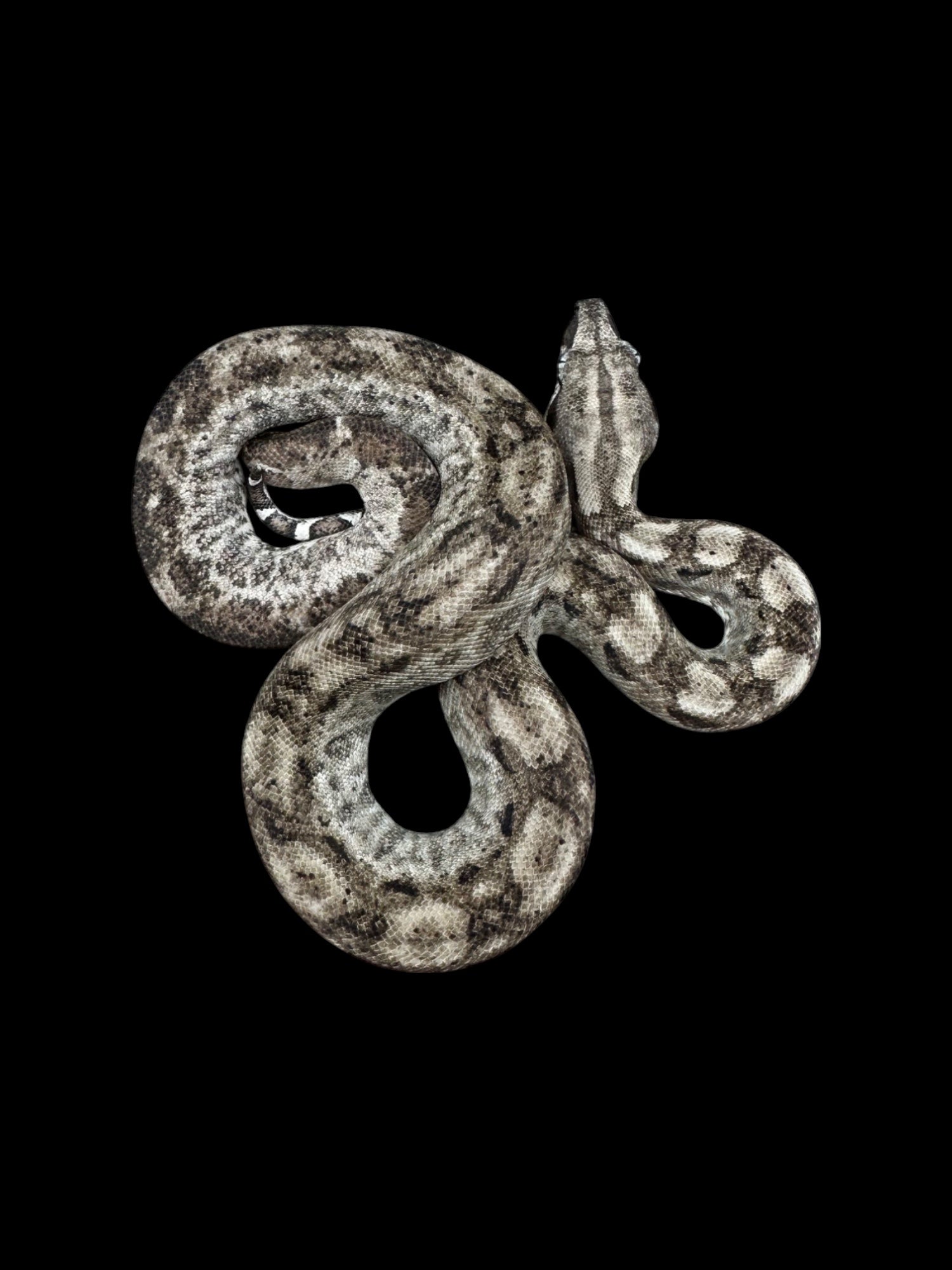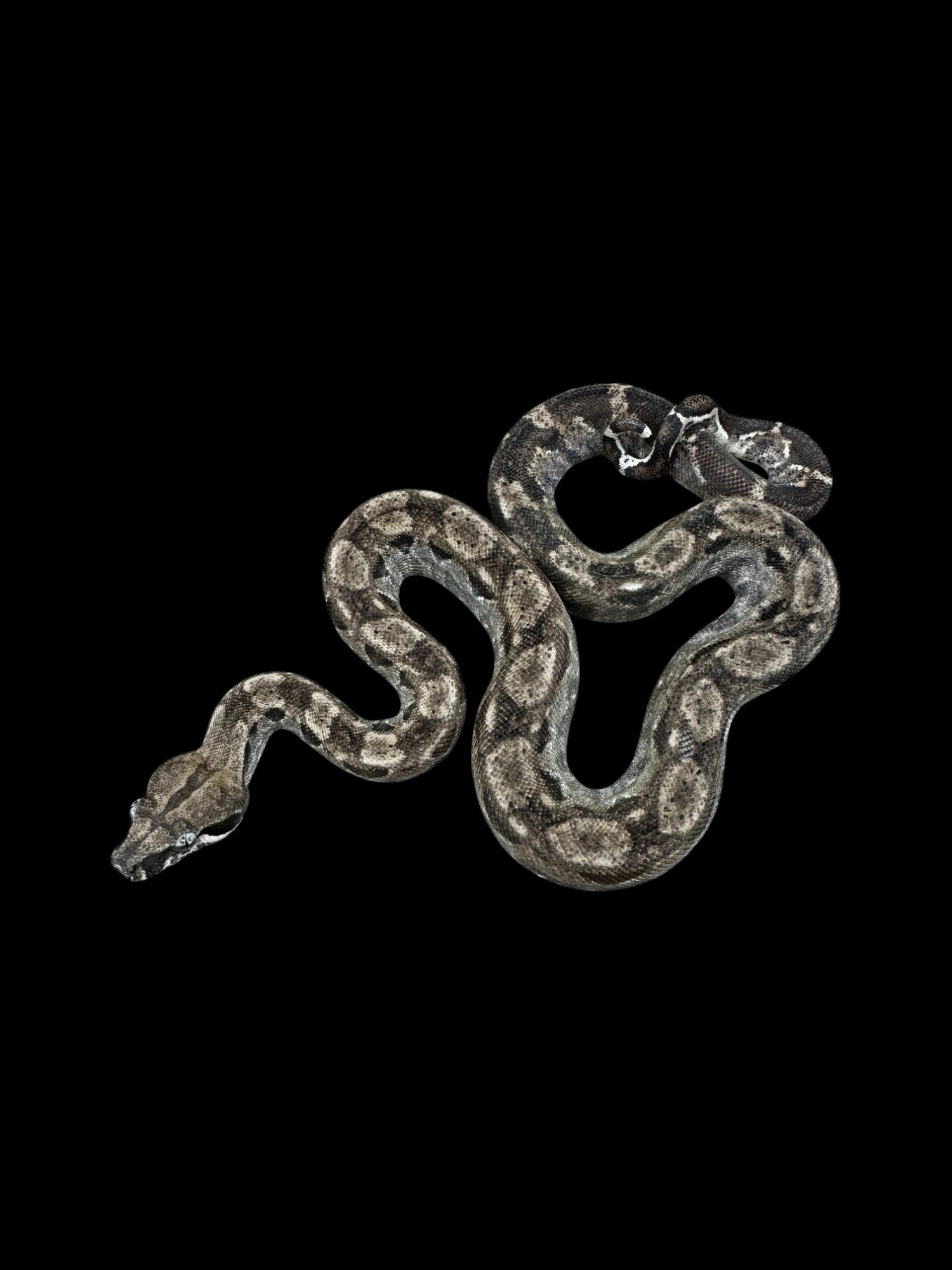Photo Disclaimer
Description
Boa Constrictor Imperator (BCI)
Boa constrictor imperator
Morph/Lineage: Hypo Type 2 Anery “Ghost” 66% Het Burk’s T+ Albino (Nicaraguan Locality)
Species Overview
-
Size: Standard BCI reach 6–8 feet (1.8–2.4 m), but Nicaraguan localities remain smaller, averaging 4–6 feet (1.2–1.8 m). They are compact-bodied compared to Colombian lines.
-
Appearance: This boa expresses the Hypo (Hypomelanistic) and Type 2 Anerythristic traits, a combination often referred to as a Ghost. Hypo reduces black pigmentation, creating brighter colours and sharper contrast, while Type 2 Anery removes red pigment, leaving silvers, greys, and blacks. Together, the Ghost form produces a pale, smoky boa with soft contrast. This individual is also 66% Het Burk’s T+ Albino, meaning it has a two-thirds probability of carrying the recessive Burk’s T+ Albino gene. The Nicaraguan lineage contributes a smaller adult size, darker base colours, and bold patterning.
-
Distribution: The natural Boa constrictor imperator occurs across Central and South America, with Nicaragua recognized for its smaller, more compact local boas.
-
Habitat: Nicaraguan boas inhabit tropical forests, scrublands, and riverside zones, adapted to regions with distinct wet and dry seasons.
-
Behaviour: Nocturnal ambush predators feeding on small mammals, birds, and reptiles. They are mostly terrestrial as adults, though juveniles climb readily.
Captive Care
-
Enclosure: A naturalistic enclosure is recommended. Adults thrive in 4′ × 2′ × 2′ setups due to their smaller size. Provide secure hides, climbing branches, cork bark, and foliage. Bioactive setups with soil substrate, leaf litter, and live plants are excellent for enrichment and humidity control.
-
Temperature & Humidity: Maintain a gradient of 80–85°F (27–29°C) with a basking spot of 88–92°F (31–33°C). Nighttime drops to 75–78°F (24–26°C) are acceptable. Humidity should remain between 55–70%, with access to fresh water for soaking.
-
Diet: Juveniles feed every 7–10 days on small rodents; adults every 14–21 days. Because Nicaraguans are smaller-bodied, prey must be portioned carefully to avoid obesity.
-
Behaviour in Captivity: Hardy and typically manageable boas, though strong feeding responses are common. With consistent care, they settle well in captivity.
- Special Considerations: While selective breeding has produced a wide variety of morphs, their core care requirements remain identical to standard Boa constrictor imperator.
Genetics/Lineage Note
The Hypo Type 2 Anery “Ghost” 66% Het Burk’s T+ Albino (Nicaraguan) involves:
-
Hypomelanistic (co-dominant): Reduces black pigmentation, brightening colour and increasing contrast.
-
Type 2 Anery (recessive): Removes red pigment, leaving greys, silvers, and blacks.
-
Ghost (combination morph): The Hypo + Type 2 Anery combo, producing pale, smoky colouration with softened contrast.
-
66% Het Burk’s T+ Albino (possible recessive carrier): Two-thirds probability of carrying the Burk’s T+ Albino trait; not visually expressed.
-
Nicaraguan Locality: Smaller adult size (4–6 feet), compact body structure, darker overall tones, and bold saddle patterning.


